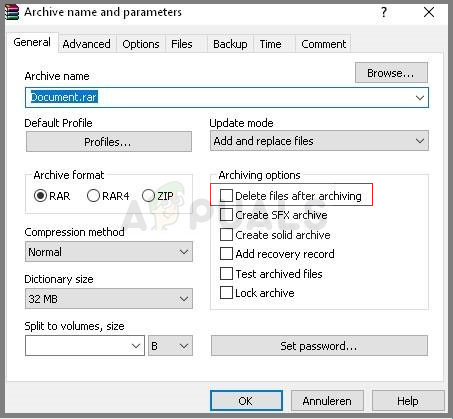Verify the Items Location and Try Again Windows 7
This error will appear when you are trying to admission a certain file either to delete, rename, or open up it. Logically speaking, if you can locate and view a file on your reckoner, you should likewise have clear admission to information technology. However, this strange error occurs and you are unable to exercise anything with that file.

Sometimes this occurs with files created past third-party services and it occurs considering the file's extension is not properly defined. In that location are other obscure causes equally well. Follow the several methods in this article to either delete the file successfully since that is what users most want to practice. Good luck!
Solution 1: Use the Following Command to Delete the Problematic File
This is one of the commands which can exist used to delete the problematic file or folder. Deleting it may be important if information technology is linked to the software you uninstalled a while ago, peculiarly if the file takes up a lot of space on the deejay. Try this method just make sure you type in the correct path to the file instead of our placeholder.
- Search for "Command Prompt" either in the Start menu or by clicking the search button right next to information technology, correct-click on it, and select the "Run as ambassador" pick. Y'all can also use the Windows Fundamental + R key combination and type in "cmd" in the Run dialog box.

- Copy and paste the command below and make sure you tap the Enter key on your keyboard afterward. Likewise, make certain to utilise the correct path to the file including its proper name. X is the placeholder letter as well, you lot should input the letter of the alphabet corresponding to the bulldoze's letter where the file is located.
rd /southward \\?\X:\bad\folder\path
- You should run across the Operation completed successfully message. If you don't check to see if you have input the file'due south location correctly. If yous have, effort checking out other solutions below.
Solution 2: A Command Prompt Tweak to Rename the Folder and Operate with it Normally
If yous don't want to delete the binder (if information technology contains important files), you can rename information technology using these commands to a not-problematic proper name and deal with it the normal manner by handling information technology via Windows Explorer. Follow the commands below carefully.
- Search for "Command Prompt" either in the Start carte or by clicking the search button right next to it, right-click on information technology, and select the "Run as administrator" selection. You can besides use the Windows Central + R key combination and type in "cmd" in the Run dialog box.

- Type in cd followed by the path to the file in the format C:\Folder1\Folder2\Folder3. However, this time yous need to omit the problematic file. In other words, the last binder in the command should exist the folder where the problematic file is located:
cd C:\Folder1\Folder2\Folder3
- Press Enter afterward this control. Employ the following set up of commands which will be displayed below. Each command is in a new line so press Enter after you blazon in or re-create each line:
DIR /A /X /P RENAME (the current name of the problematic file) (a non-problematic name) Get out
- Make certain you only write the current name and the new proper noun separated past a space. Don't write the brackets in the control. If everything goes well, you should now exist able to operate the file normally via Windows Explorer.
Solution 3: File without Any Extension
This method can be practical to scenarios where the problematic file does not have a viable extension meaning Windows only doesn't know what to do with information technology and it displays the error message from to a higher place. The usual scenario occurs with files created by browser plugins (Mozilla Firefox plugins near notably) and so here is how you can delete those files:
- Follow steps 1 and two from the solution above in lodge to correctly navigate to the file's location on your computer. Be careful while inputting the folders.
- Printing Enter later the command and use the following 1 in order to delete the problematic file with the problematic extension (or the lack of one, to exist more exact):
del *.*
- Open File Explorer to check if the file is really gone.
Solution 4: Workaround with Archiving
This solution is more of a workaround merely it gets the task done as a side-effect of another activeness. That being said, it'southward perfect for users who don't like using Control Prompt and who want to exercise everything using their mouse in a graphical environs. It'due south besides easy to apply so brand you attempt this one out!
- Start of all, y'all will need a programme named "WinRAR". It can be downloaded from this link.
- Locate the problematic file or folder on your estimator by navigating to it in File Explorer. Right-click on it and cull the Add to archive option from the context carte.
- When the archiving options window opens, locate the Delete files later on archiving option and brand sure you select it. Click OK to kickoff the archiving process and, later on it finishes, y'all should notice that your problematic file is missing!

- Delete the archive you created likewise by correct-clicking on it and choosing the Delete option from the context carte.
Source: https://appuals.com/how-to-fix-the-could-not-find-this-item-this-is-no-longer-located-in-path-verify-the-items-location-and-try-again/
Post a Comment for "Verify the Items Location and Try Again Windows 7"